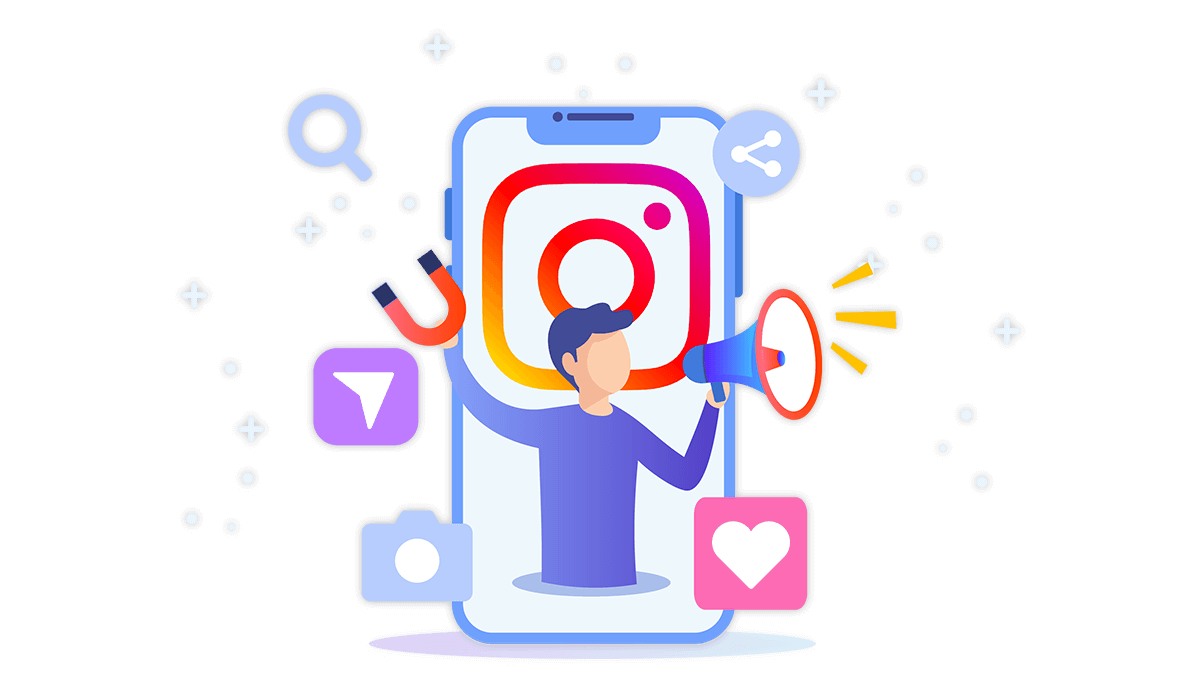Instagram is a great way to reach your target market. Before running ads, it is important to have your Instagram ads account set up. This allows you to have an active presence on Instagram, monitor activity, and respond quickly to comments and questions.
The Instagram platform engages users in a unique discovery experience, making it a preferred proposition for brands and businesses looking to engage with the platform’s user base.
Instagram has designed its advertising to be as unobtrusive as possible. It feels less vending than Facebook sponsored posts, giving users the sense of discovering something new when they come across a brand advertisement, rather than encountering a sales promotion to be skipped over.
Instagram advertising is also limited, so users should only see a couple of ads per browsing session. This is intended to maintain the platform’s integrity while giving advertisers the opportunity to appear as close to a genuine piece of content as possible.
There are specific guidelines you need to follow to ensure that your account runs smoothly and reaches its full potential. To get started with Instagram advertising, check out our step-by-step article on how to use Instagram ads.
Table of Contents
What Are Instagram Ads and Why Run Them?
Instagram ads are paid video or image posts that online businesses publish on Instagram. These can be linked to your brand’s account, any URL you want, or your direct messages. Because Instagram and Facebook are both owned by Meta Technologies, Instagram ads can be created using the Facebook Ads Manager.
So, why run Instagram Ads?
You must pay in order to reach specific demographics and overcome market saturation. Fortunately, there are a few advantages to consider when considering paid Instagram ads.
- Flexible pricing.
There is no set price for advertising on Instagram. You actually create a bid for your placement.
- Platform growth and user behavior.
Users spend, on average, 50 minutes a day on Facebook, Instagram, and Messenger. According to World Economic Forum, Nigeria spends the longest time per day connected to social media sites, with the average user signed in for 4 hours and 7 minutes. These statistics only support that users are constantly interacting through their accounts and consuming personalized content on their feeds.
- Instant ad publication.
Get ready for instant relief. On Instagram, you can submit your ad and get approval within a few hours. The turnaround time is incredibly quick, and you are able to get started with promoting your products immediately.
Set Up Instagram ads using Facebook Ads Manager
Because Facebook’s advertising system is so comprehensive, there are several steps we have to go through to set up Instagram ads. They are quite straightforward, and we’ll go through each of them below. Here are the general steps:
- Choose a marketing objective
- Name your ad campaign
- Define your audience, placements, budget, and schedule
- Create the ad itself or use an existing post
Step 1: Navigate to Facebook Ads Manager
To get started, make sure your Facebook page is connected to your Instagram profile.
Next, log in to Facebook Business Manager with your business account credentials. Scroll down and click Add Ad Account.
You can integrate an existing ad account or, if you don’t have one, create one.
Having this account will allow you to organize your Instagram ad campaigns, view their performance, and control the ad settings.
Once you set up an ad account, navigate to Ads Manager from the top-left three-line menu. Select +Create to start making ads.
There are two methods to set up an ad campaign — Guided and Quick Creation. For this tutorial, we’ll show you how to create one using the Guided option.
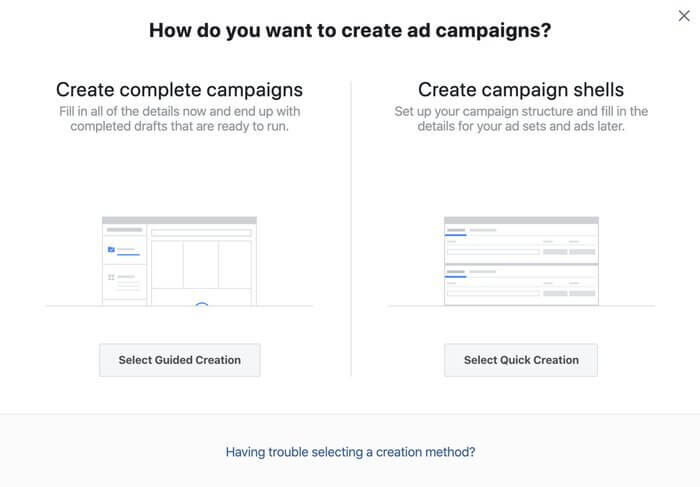
Step 2: Set your primary objective
Your marketing objective will affect how Instagram broadcasts each ad across the platform. So, you need to choose carefully.
For ads on Instagram, there are eight objectives to choose from:
- Brand awareness — let your target market know about your brand
- Reach — spread the word to the maximum number of users, regardless of preferences
- Traffic — direct users to your website or app store
- Engagement — lead people to interact with your page or posts
- App installs — encourage users to download your app
- Video views — promote video content
- Lead generation — get information about people interested in your brand
- Conversions — drive people to perform specific actions on your site or app
After picking an objective, name your Instagram ad campaign and enable split testing to evaluate the effectiveness of your advertising strategies.
We recommend that you enable Campaign Budget Optimization as well:
- This feature lets you allocate a Daily or Lifetime budget for the ad campaign
- With a Daily budget, Instagram will spend up to a limit per day, set by you. This option is ideal for brands with a fluctuating budget that determines the campaign duration
- On the other hand, the Lifetime budget allows you to set the campaign’s end date. It also lets Instagram spend funds during that period
You can also change the Campaign Bid Strategy to determine how Instagram will make the most out of your budget.
First-timers can opt for the Lowest Cost option — after all, you have no data to develop your bid strategy yet. This prevents you from overspending or underspending your bid amount.
Leave the Ad Scheduling and Delivery Type settings as they are, and we’ll customize them in the later steps.
Once everything’s set, click Set Up Ad Account and adjust the ad campaign’s country, currency, and time zone.
The app will then redirect you to the Ad Set section, where you can move to the next step.
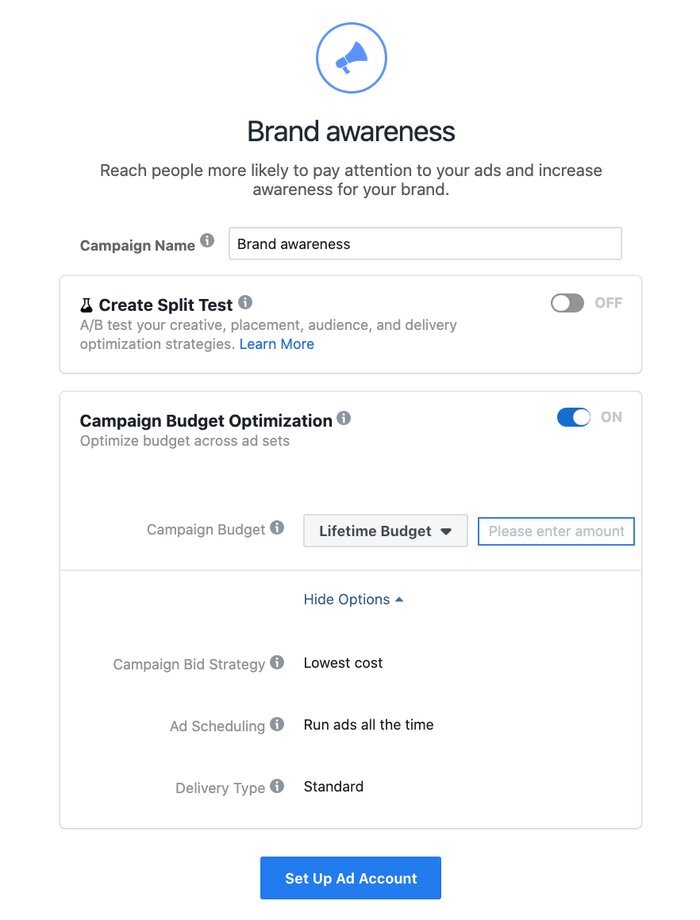
Read More: How Much Do Instagram Ads Cost in Nigeria 2022?
Step 3: Define your target audience
Ads Manager lets you create a new audience group based on these targeting options:
- Location — include or exclude people living in specific countries, cities, or addresses from your ad’s target market
- Age — pick an age demographic between 18-65 or over
- Gender — target only men, women, or both
- Languages — while the app will include the official language of the targeted locations, you can manually add other languages spoken by your target demographic if needed
- Detailed targeting — further narrow the audience by demographic group, interests, and user behavior
- Connections — look for people linked to your brand
When you modify the settings, Facebook will let you know if your audience base is too specific or too broad for successful brand awareness.
Once you find the right balance between each setting, select Save This Audience for future use.
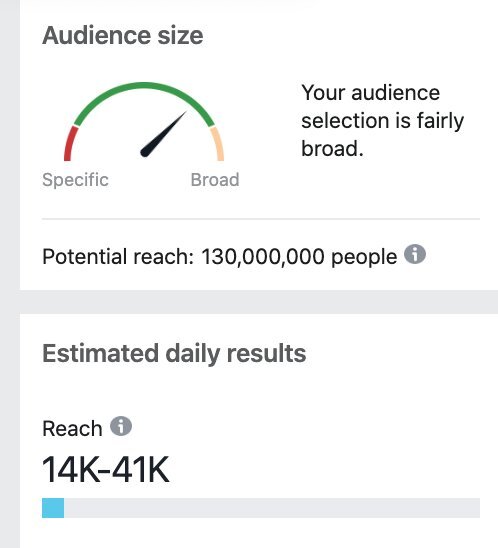
As your brand grows, you should consider using the Custom Audiences and Lookalike Audience features.
Custom Audiences helps you target people who have already interacted with your business, while Lookalike Audience is useful for finding users that are similar to your existing customers.
Step 4: Configure ad placement
If you want to broadcast ads on both Instagram and Facebook, simply select Automatic Placements and let the Ads Manager configure the settings for you.
However, if you only want to run an ad campaign on Instagram, choose Edit Placements and uncheck the other platform.
You can also choose whether your ads are shown on the Instagram Feed, Explore page, and Stories.
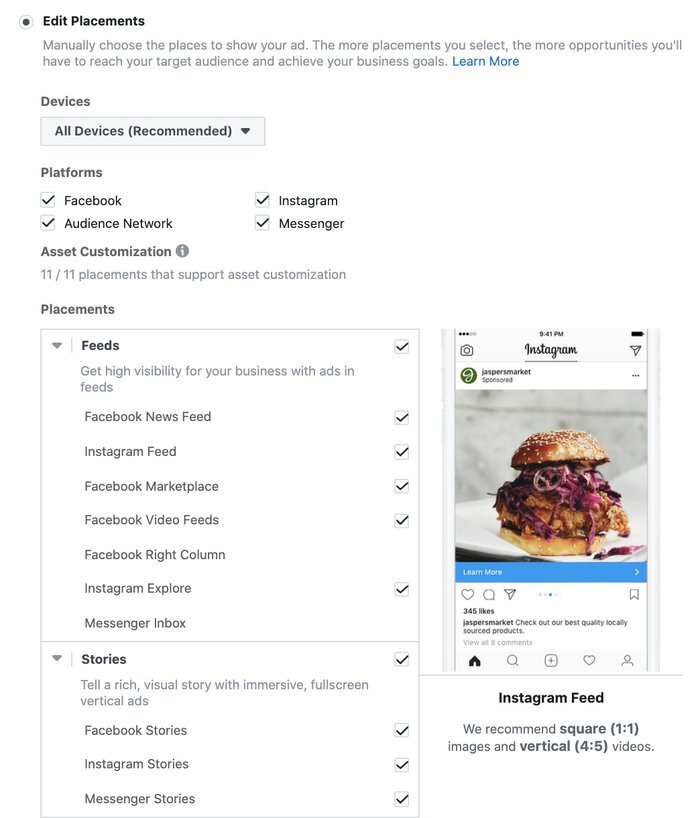
Step 5: Control your budget and schedule
Next up, it’s time to decide how Instagram spends your money, plus how it shows your Instagram ads.
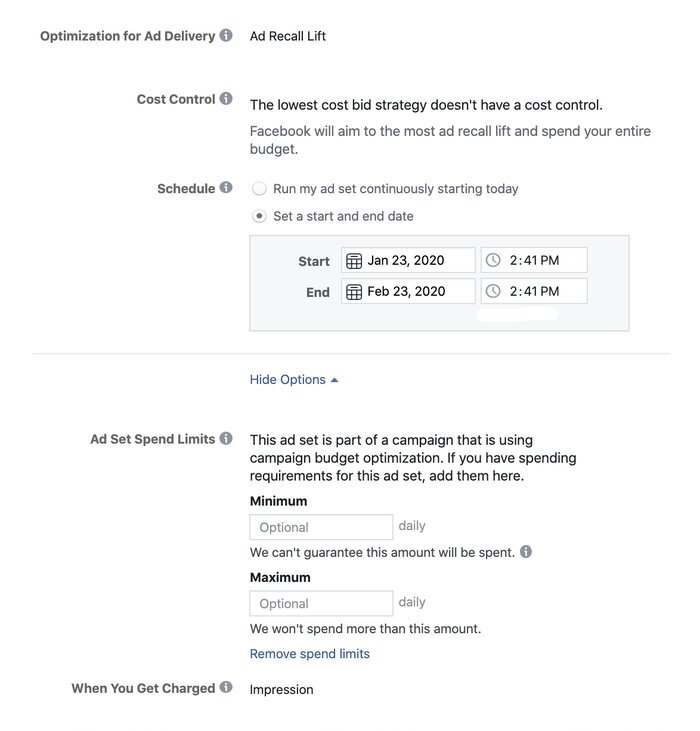
Here are the advanced settings that you can modify:
- Optimization for Ad Delivery — define how the platform delivers your ads. For instance, the Ad Recall Lift method lets Ads Manager display your ad to users who are likely to remember seeing it after two days
- Cost Control — depending on the chosen campaign bid strategy, you can set a maximum bid for each auction or control the average cost of the ad. However, selecting the Lowest Cost strategy from step two will disable this setting
- Schedule — select the date and time range to run your ad
- Ad Set Spend Limits — use this feature if you have specific budget requirements for that particular ad campaign
- When You Get Charged — depending on your objectives, the app may charge you based on the CPC or CPM pricing models
Some objectives have additional settings you can customize for better ad performance.
For instance, choosing the Reach objective allows you to modify the Frequency Cap — stopping the app from overplaying your ad to the same user within a specific time frame.
Once you’re done, click Continue and go to the Ad section to finish your ad creation.
Step 6: Create Instagram ads
This is the fun part, where you can get started with creating your standout Instagram ad.
First, determine whether you want to feature an existing post or a new post.
If you want to push an existing post for promotion, simply select one from your feed and preview the ad. Make sure you include an appropriate call-to-action button.
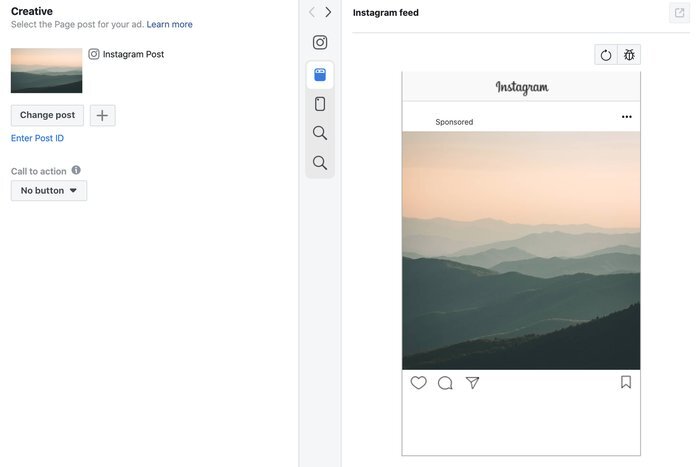
To create a completely new Instagram ad, pick a format — you can choose from Carousel ads, Single image or video, or Collection.
If you’re not sure which ad format to choose, take a peek at the next section where we’ll explore this topic.

If you want to show the ad in both Instagram Feed and Story, you’ll be able to upload one media file for each placement. After adding the files, click Edit to customize the image or video’s appearance.
In the Text & Links section, you can fill in the ad copy and links.
Write an attention-grabbing copy on the Primary Text box, as it will appear on all placements. Don’t forget to choose a fitting call-to-action button.
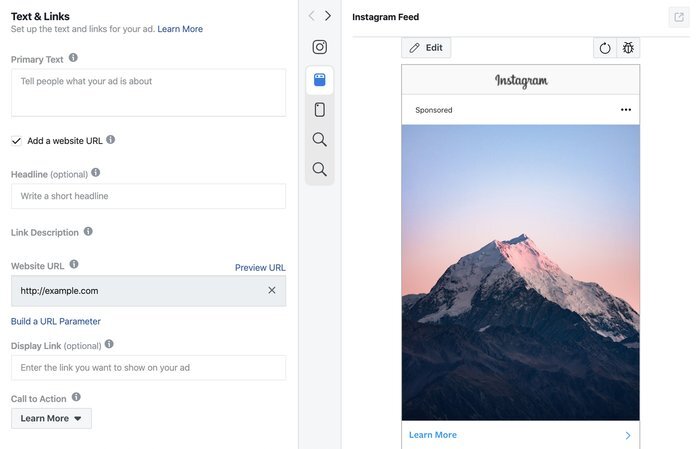
You could also include a translation of your Instagram ad campaign in the Languages text box if needed. This is a great accessibility feature for brands with global ambitions.
Click Review to double-check the ad campaign details, then press Confirm to submit your ad for review.
Read More: How to Set Up a Business Profile on Instagram in 2022
Set Up Instagram ads using the Instagram app
You can also advertise on Instagram by using just the app itself.
While advertising directly on the Instagram app is relatively easy, you only get basic control over your ad campaigns.
For better Instagram ad campaign management, connect the account with your Facebook Business Page via Facebook Ads Manager.
That said, if you’re new to advertising on Instagram, managing ads in this more simple way might be all you need to get started. Let’s go through the steps.
To create Instagram ads and manage them, you need to set up a professional Instagram account. This type of account gives you access to business-related features for marketing purposes.
When setting up an Instagram account, you can opt for a Creator or Business profile:
- The Creator profile is ideal for public figures like celebrities, influencers, and content creators who want to cultivate personal brands
- The Business profile is more suitable for companies with a more traditional setup, who want to advertise on Instagram
While both profiles offer promotional tools, there are specific features on each that may be more useful depending on your user demographics.
For instance, Business profiles have contact buttons that redirect users to a phone number or email address so they can directly contact brands.
Another essential thing you should do if you want to advertise on Instagram is to prepare a Facebook page.
There’s a huge benefit to cross-platform advertising.
Connecting your Instagram account to a Facebook page will give you access to all the business and cross-app tools on both social media platforms.
Instagram will prompt you to create a Facebook page if you don’t have one already.
To set up a professional Instagram account, you need to sign up for a personal one first, then follow these steps:
- Go to Settings from the three-line menu on your profile
- Go from Select Account to Switch to Professional Account
- Pick the type of professional profile that best describes you — Creator or Business
- Select the category your brand falls into
- For Business accounts, fill in the contact details for your Public Business Information
- The app will ask you to connect the account to a Facebook page. You can either log in to an existing Facebook account or create a new one
- Fill in the Page Title and Choose Category details for your Facebook page, then press Done
Step 2: Choose which posts to push
Promote an Instagram post you already have on your grid, or upload a new post, then hit the Promote button.
When promoting a post on Instagram that’s already online, it’s worth finding out what kind of content is most successful for your brand.
You can access the Promotions menu on your profile, and it’ll tell you which of your posts will perform the best. Select Promote Top Post to go with the app’s recommendation.
Step 3: Choose your objective
By now, you’re already familiar with choosing an objective for your campaigns.
For each Instagram promotion, you need to determine where the ad will send people to — your profile, website, or direct messages.
Consider the purpose of the Instagram ad campaign. Perhaps you’re committed to lead generation, or maybe this promotion is all about connecting with audiences.

If you simply want to generate more user engagement on your Instagram account, it’s best to go with the Your Profile option.
If you have a separate website, choosing Your Website allows you to turn the promoted post into a gateway to your website or eCommerce store.
This is great for pushing brand awareness. Plus, driving traffic to your website from Instagram will help with lead generation, getting users one step closer to buying from your brand.
You can also set up call-to-action buttons like Learn More, Shop Now, or Watch More.
Pro tip — if you don’t have a website yet, use the Contact us to create one.
With ready-to-use designer-made templates and AI-driven features, you’ll have a professional website in minutes. That’s not an exaggeration.
Back on Instagram, Your Direct Messages option is best for prompting users to contact you directly.
It’s ideal for businesses with customizable products or services, as customers are more likely to submit their preferences before making a purchase.
Step 4: Set your target audience
Instagram provides two ways to define your target audience — Automatic and Create Your Own.
The Automatic option lets the app analyze your followers, and it reaches out to users with similar profiles and preferences.
For better control over your target audience, you can go for the Create Your Own custom audience option. With this, you determine audiences based on the following metrics:
- Location — target particular regions or local areas within a maximum 30 miles radius
- Interests — match users’ preferences with your business’ niche
- Age & Gender — select the desired age and gender demographics
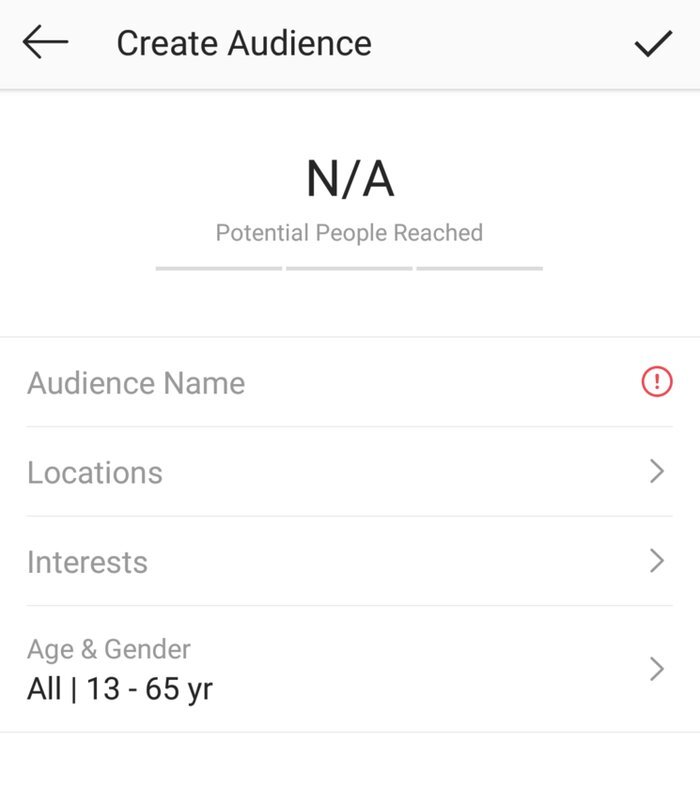
As you modify the targeting options to create a custom audience, Instagram will calculate the number of potential people the ad can reach.
Once you’re done, name the new custom audience group for future use.
Repeat the previous steps to create multiple audience groups as needed, then proceed to the next step.
Step 5: Set your budget and campaign duration
You can adjust your ad’s daily spending by dragging the Budget and Duration sliders. Instagram will tell you the number of users you can reach based on your budget.
If you don’t know how much to allocate, feel free to follow Instagram’s recommended budget shown in the Learn about budget, duration & distribution section at the bottom.
The app won’t spend more than your budget limit.
Step 6: Publish your Instagram ad
The last step before publishing your Instagram ad is to review all the data we explored in the previous steps.
Make sure you’ve added the right information to optimize the ad campaign’s results.
Complete the process by making a payment, then wait for Instagram to approve your ad.
Instagram advertising tips and best practices
If you’ve read this far, we’re confident that you’re ready to promote on Instagram. Here’s our final checklist of best practices for serving Instagram ads like a pro:
- Use high-quality content. Instagram is a visual platform, so make sure your Instagram ads are bold, bright, and captivating. Although it’s tempting, don’t go too heavy on the filters.
- Be consistent with your brand identity. The style and tone of voice of your Instagram ads should match your website, packaging, and other marketing materials.
- Keep content fresh and relevant. It’s not about posting an ad per day, but ensure you stick to a schedule with your promotional content, just as with any campaign.
Conclusion
This page contains a lot of information, which we hope isn’t overwhelming. Remember that you don’t have to consume it all at once; bookmark this page as a quick reference guide.
If there is one key takeaway from this article, it is that Instagram should not be overlooked when developing your digital advertising strategy. It has the potential to be one of the most effective and impactful places to market your company.
Unlike some other advertising channels, such as TV commercials, profitability on Instagram can be demonstrated and measured if the proper foundations are in place. With the proper foundation, you can tell a data story that is directly related to your overall business.

